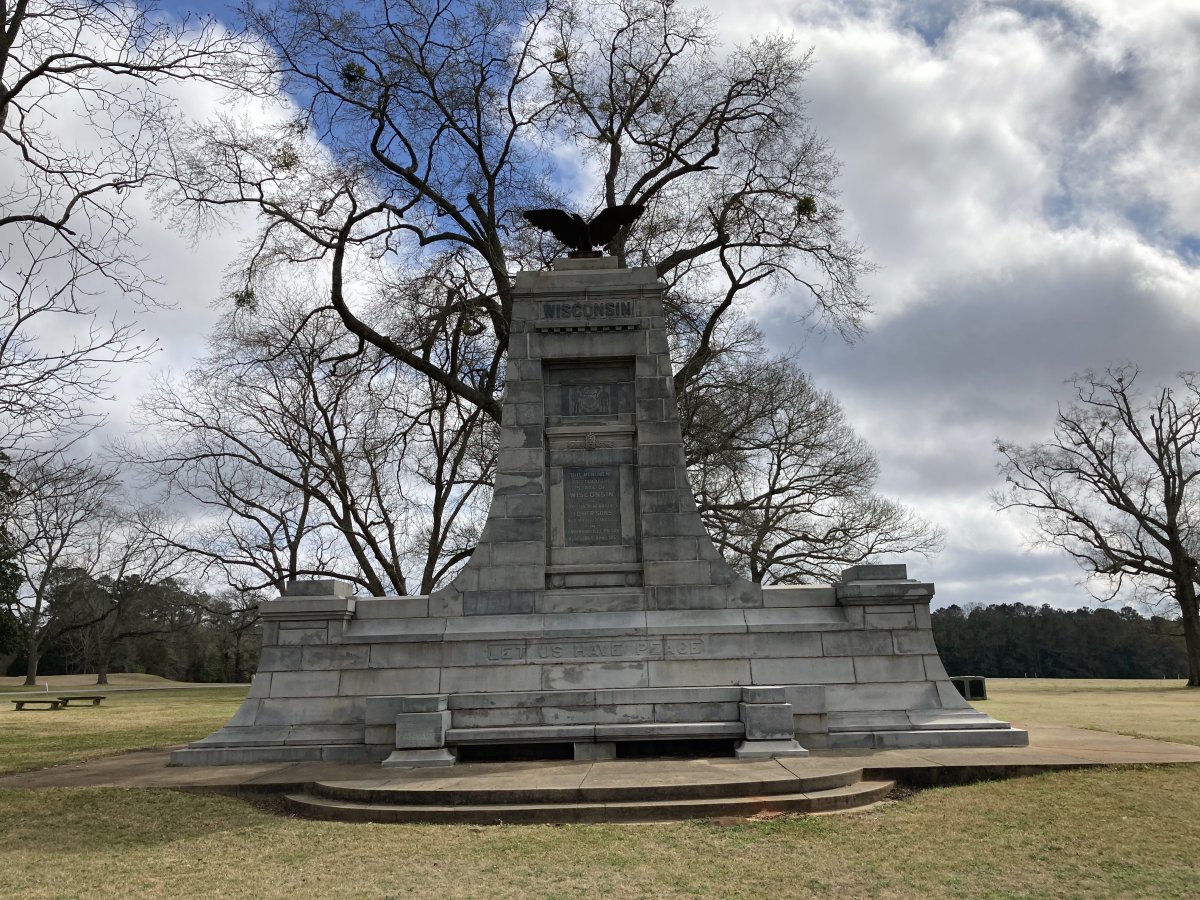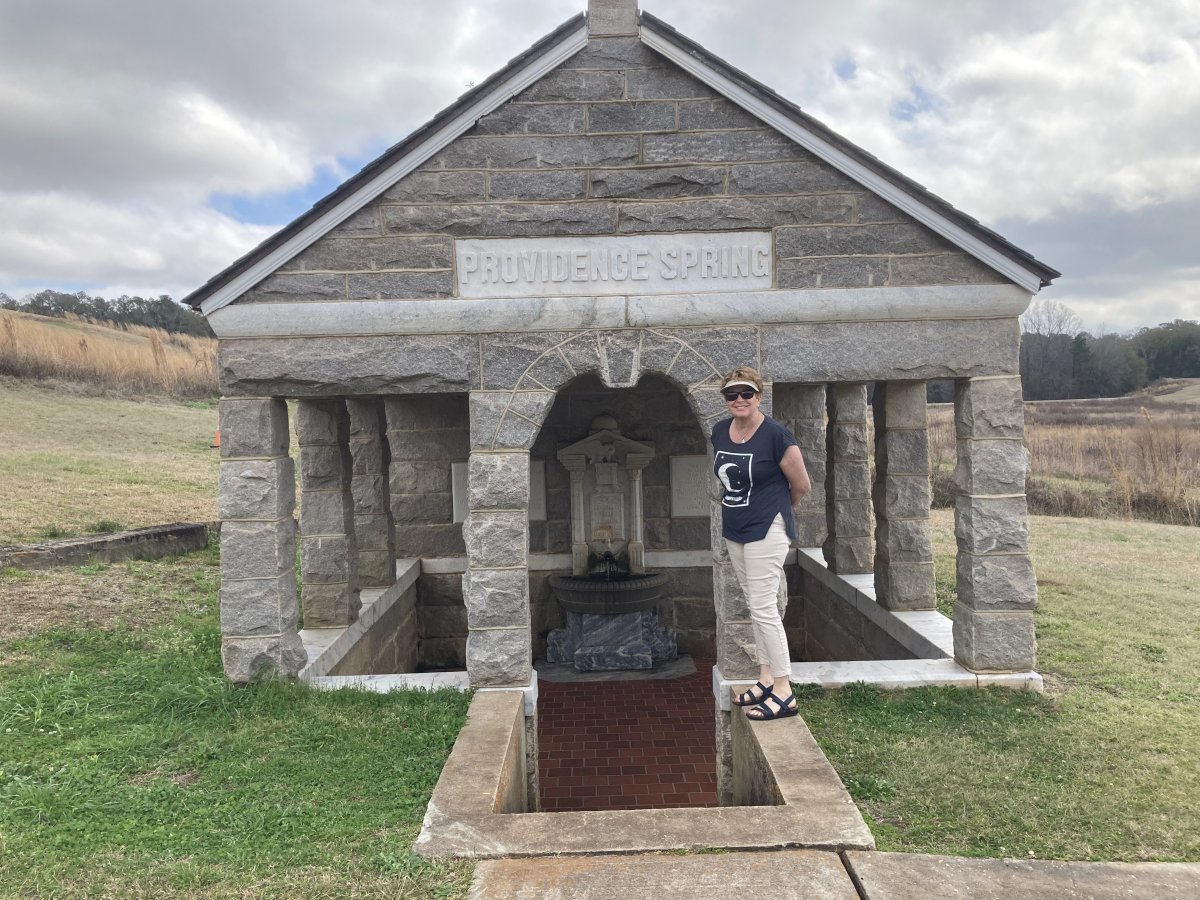February 24, 2022 - Andersonville Prison
Andersonville Prison has long been on my bucket list. Well, I finally made it.
Andersonville was a Confederate prisoner-of-war camp during the final fourteen months of the American Civil War. It is northeast of Americus.
Our BnB host Susan recommended starting out by visiting the Drummer Boy Civil War Museum so we did that. It's a small but very interesting museum featuring a diorama of the prison. At the time, Andersonville was little more than a train stop, pictured at right. The prisoners would disembark the train and walk to the rectangular prison camp, surrounded by a stockade wall made of rough-hewn logs about 17 ft high.
A light fence known as "the dead line" was erected approximately 19 ft inside the stockade wall. It demarcated a no-man's land. Anyone crossing or even touching this "dead line" was shot without warning by sentries in the guard platforms (called "pigeon roosts") on the stockade.


A closer look at the camp. A stream ran through the camp, which was the prisoner's only water source. And also their toilet, so disease was rampant. No shelter was provided to the prisoners. They made makeshift tents from what they brought with them to protect them from the hot Georgia sun.


The prison was created in February 1864 and served until April 1865. The site was commanded by Captain Henry Wirz, who was tried and executed after the war for war crimes. The prison was overcrowded to four times its capacity, and had an inadequate water supply, inadequate food, and unsanitary conditions. Of the approximately 45,000 Union prisoners held at Camp Sumter during the war, nearly 13,000 died. The chief causes of death were scurvy, diarrhea and dysentery.
This monument was erected by the state of Wisconsin in grateful remembrance to her sons who suffered and died in Andersonville Prison from March 1864 to April 1865.





By 1864, civilians in the Confederacy and soldiers of the Confederate Army were all struggling to obtain sufficient quantities of food. The shortage of fare was suffered by prisoners and Confederate personnel alike within the fort, but the prisoners received less than the guards. Unlike the captives, the guards did not become severely emaciated or suffer from scurvy as a consequence of vitamin C deficiency due to a lack of fresh fruits and vegetables in their diet. The poor diets and resulting scurvy was likely a major cause of the camp's high mortality rate, as well as dysentery and typhoid fever. These resulted from filthy living conditions and poor sanitation. The only source of drinking water was a creek that also served as the camp's latrine. It was filled at all times with fecal matter from thousands of sick and dying men. Even when sufficient quantities of supplies were available, they were of poor quality and inadequately prepared.
There were no new outfits given to prisoners, whose own clothing was often falling to pieces. In some cases, garments were taken from the dead. Although the prison was surrounded by forest, very little wood was allowed to the prisoners for warmth or cooking. This, along with the lack of utensils, made it almost impossible for the prisoners to cook the meager food rations they received, which consisted of poorly milled cornflour. During the summer of 1864, Union prisoners suffered greatly from hunger, exposure and disease.




Robert H. Kellogg, sergeant major in the 16th Regiment Connecticut Volunteers, described his entry as a prisoner into the prison camp, May 2, 1864: "As we entered the place, a spectacle met our eyes that almost froze our blood with horror, and made our hearts fail within us. Before us were forms that had once been active and erect;—stalwart men, now nothing but mere walking skeletons, covered with filth and vermin. Many of our men, in the heat and intensity of their feeling, exclaimed with earnestness. "Can this be hell?" "God protect us!" and all thought that he alone could bring them out alive from so terrible a place. In the center of the whole was a swamp, occupying about three or four acres of the narrowed limits, and a part of this marshy place had been used by the prisoners as a sink, and excrement covered the ground, the scent arising from which was suffocating. The ground allotted to our ninety was near the edge of this plague-spot, and how we were to live through the warm summer weather in the midst of such fearful surroundings, was more than we cared to think of just then."
The outer door.



The visitors center has a short film about Andersonville which is worth seeing, and also contains the National Prisoner War Museum. All I can say is that you don't want to be a prisoner of war.
Here is a replica of a bamboo cage used to hold American prisoners during the Vietnam war.




